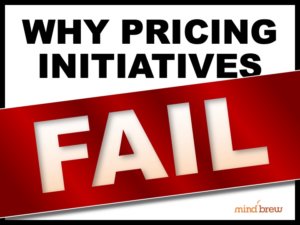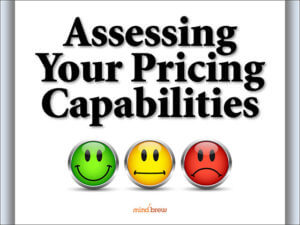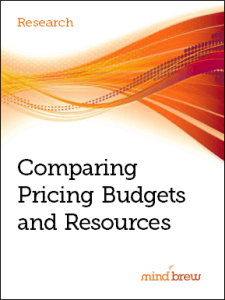In the Pricing Through Uncertainty webinar, we explore a number of strategies and tactics for reducing the ambiguity and risk associated with pricing into increasingly volatile market conditions. The best practices we cover in this session address a broad range of internal and external factors and considerations, from your team’s mindset and perspectives on risk to upstream and downstream influences on supply and demand.
Along the way, we highlight the importance getting out of reactive mode, predicting and planning for the “known unknowns,” and getting in the habit of asking, “What if things don’t work out as we expect?” And in the live webinar, this discussion of contingency planning and prediction prompted a great question during the Q&A portion of the session:
“What about modeling the Best, Worst, and Most Likely outcomes?”
This is a fairly common approach, particularly when presenting plans and projections to management and/or other departments. And it’s a good tool to include in your advance- and contingency-planning toolkit.
But we would be remiss if we didn’t point out that this approach does have an Achilles Heel…
No matter where they land or how they look, these types of “Best, Worst, and Expected/Most Likely” projections are only as accurate as the underlying assumptions that went into the model that produced them.
Of course, this is also the case with any type of predictive model or projection. It’s just that with this particular approach, the presentation itself can add a degree of credibility and assumed accuracy that may not be warranted.
When people see this type of multi-scenario projection, they tend to think that a lot of thoughtful and thorough work must’ve gone into it…after all, there are three! And people tend to get caught up in assessing the relative differences between the scenarios, rather than considering that all of them might be utter Bravo Sierra.
So…what’s so bad about that? Don’t you want management to accept your projections without too many questions? Don’t you want other departments to accept your projections without much doubt?
Not if those projections are wrong! No way! Convincing others to accept inaccurate projections will, at best, destroy your credibility moving forward. And at worst, it’ll have you looking for another job.
The point is that it doesn’t really matter whether you’re predicting pricing outcomes, crop yields, weather patterns, or population dynamics. It doesn’t matter whether you’re projecting the best, worst, most likely, expected, pessimistic, or optimistic scenarios. And it doesn’t matter if you’re generating one prediction…or three…or seven…or 267.
In each and every case, the accuracy of the projection…and thus, the relevance and value of the projection…are almost entirely governed and determined by the underlying assumptions.
So yes, by all means, leverage the Best, Worst, and Most Likely Scenario approach in your planning efforts. Just make sure that your underlying assumptions are as accurate and realistic as you can possibly make them. And when you share these projections with others, be sure to convey the underlying assumptions, too.
If your assumptions are sound, sharing them will enhance the credibility of your projections even more. But if your assumptions are flawed or incomplete, allowing others to weigh in gives you a chance to make corrections before any damage is done…to your organization or to your own credibility.
PS–Remember these dynamics when you’re the audience for this type of projection, produced by others. Don’t allow yourself to be seduced by the “facade of credibility” and “veneer of accuracy” inherent to this type of data presentation. To assess the credibility and likely accuracy of any prediction or projection, ask about the underlying assumptions.
PSS–While it’s true that accurate assumptions will sometimes produce inaccurate projections, it’s important to recognize that inaccurate assumptions will always produce inaccurate projections.
















